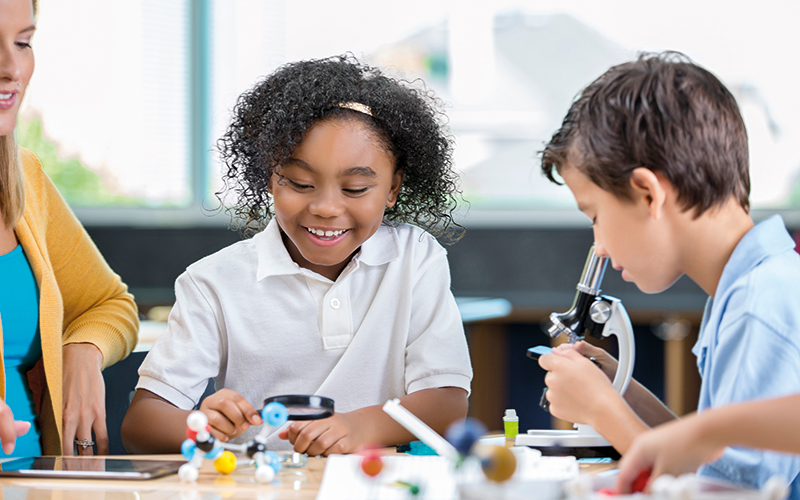How the IBMS can drive forward face-to-face public engagement in a post-pandemic world.

As we continue to adapt to a post-pandemic world, where face-to-face connections are valued now more than ever before, the IBMS is once again supporting members with their public engagement events.
Biomedical Science Day 2022 proved to be an incredible opportunity to get back out into the world and promote our profession to the wider public – where engaging with primary school children and staff turned out to be an especially worthwhile initiative.
At the IBMS, we are always willing to go the extra mile to support our members with public engagement, particularly with primary and secondary school students – the potential future of our profession.
IBMS member Blanka McCarthy successfully applied for a Biomedical Science Day Activity Fund this year for an event held at West Oxford Primary School. In a recent letter to the IBMS evaluating her event, she outlined both the benefits and challenges of holding activities with primary school classes.
Blanka has been holding microscopy workshops for Biomedical Science Day in schools within the Oxford area for a few years now and is a seasoned expert in teaching primary school children about biomedical science.
While primary schools are a hub of potential activity, filled with keen children who are more than willing to get stuck in with hands-on demonstrations, there are usually limited resources available – primary schools tend not to have science classrooms or facilities. This year, the IBMS funding allowed Blanka to realise the full scope of her ideas.
Blanka held several days of biomedical science-related activities – bringing together year groups from three to six. She used short presentations to explain the basics of the field in an accessible way, fun and engaging videos from the IBMS website, and role-plays to demonstrate the journey of urine samples from GP surgeries to laboratories.
Blanka’s students also had the chance to use dipsticks to test various samples of “urine” (water, Fanta, apple juice and milk), to play around with microscopes, and to dress up in lab coats as biomedical scientists.
By way of thanks, a Year 5 class wrote a letter to the IBMS, expressing their gratitude for the chance to observe their own cheek cells with microscopes that were borrowed from the Royal Microscopic Society – something that turned out to be a class-favourite activity.
Blanka commented on running such days: “It is hard work, involving tonnes of preparation, time, patience and answering questions” but “I was rewarded with smiles, with children expressing a real interest in science.”
If you would like to get involved in public engagement, the IBMS has a range of materials designed to support you engaging with audiences of all ages. Visit www.ibms.org/resources, where you will find access to activity sheets, comics and videos as well as being able to order supporting freebies for your events.
The Institute is also open to suggestions about how to improve its support for events and welcomes your feedback at [email protected].
Image credit | iStock
